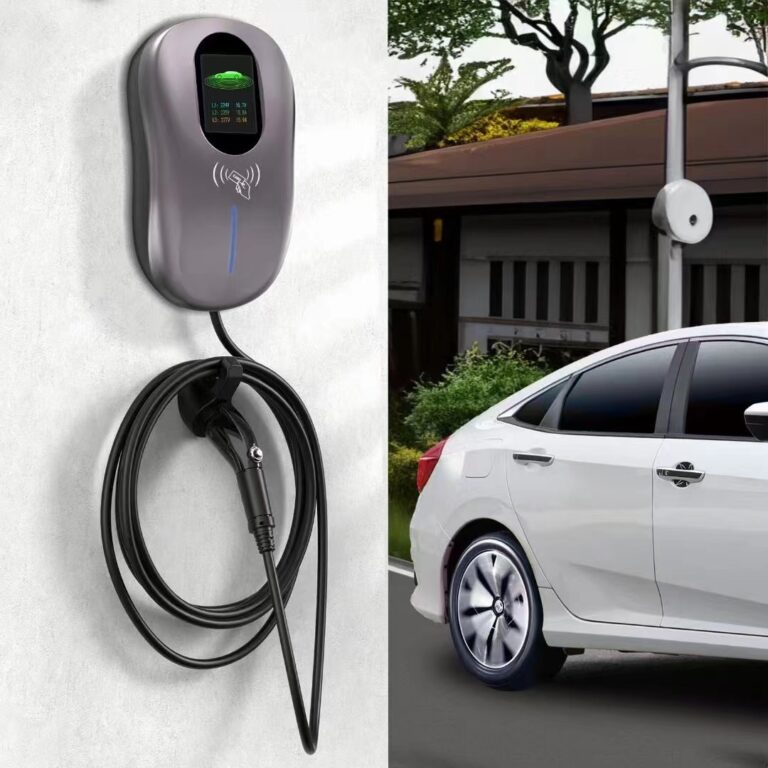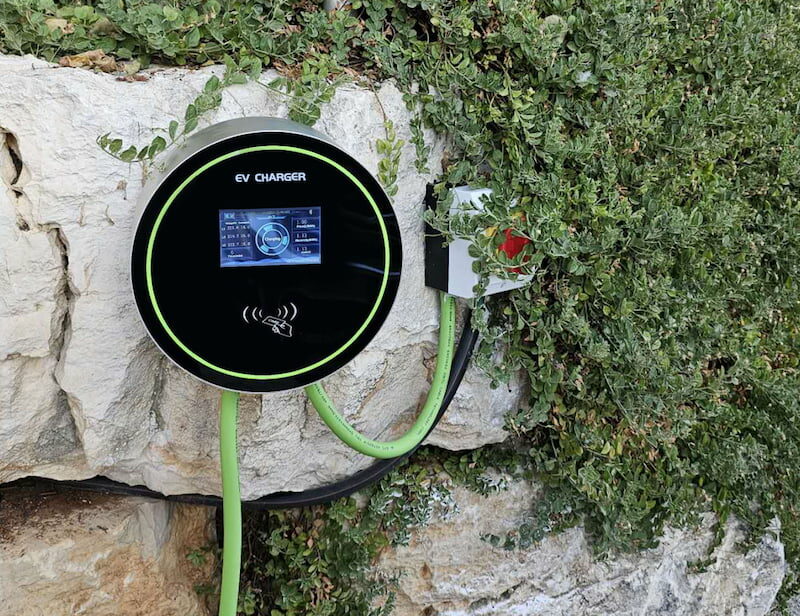Introduction
Electric vehicles (EVs) are becoming increasingly popular as more people seek out sustainable transportation options. However, owning an EV requires a reliable and efficient charging system. This is where EV chargers come in. An EV charger is a device that supplies electric energy to recharge the battery of an electric vehicle. It is essential for EV owners to have access to a dependable and safe charging solution, whether at home or on the go. In this blog post, we will discuss how to protect your EV charger and ensure optimal performance. We’ll cover everything from portable chargers to wall-mounted options, as well as maintenance tips to keep your charger in top condition. By following these guidelines, you can rest assured that your EV charger will provide you with the power you need when you need it most. So let’s dive in and explore the best ways to protect your investment and maximize its performance!
Protecting Your Portable EV Charger
As an EV owner, you understand the importance of protecting your portable EV charger. These chargers are an essential tool for charging your vehicle on-the-go, and without them, you’d be left stranded with a dead battery. To ensure that your portable charger remains in top condition, it’s important to take some precautions during use.
- First and foremost, it’s crucial to avoid exposing your charger to extreme temperatures. This means avoiding leaving it in direct sunlight or extreme cold for extended periods of time. Both heat and cold can damage the internal components of your charger, reducing its efficiency and potentially shortening its lifespan.
- Another way to protect your portable charger is by using a charge box. These boxes are designed to provide an extra layer of protection against the elements, keeping your charger safe from rain, snow, and other environmental factors. They’re also great for preventing accidental damage if you drop your charger or bump it against something while transporting it.
- Proper ventilation is also critical when using a portable EV charger. Make sure that there’s adequate airflow around the device while it’s in use to prevent overheating. If you’re using the charger indoors, make sure that there’s plenty of space around it so that air can circulate freely.
- Finally, be mindful not to overcharge your battery when using a portable EV charger. Overcharging can cause damage to both the battery and the charging unit itself. To avoid this issue, make sure that you’re using a compatible charging cable and follow the manufacturer’s recommended charging times. But use GREENC’s portable EV charger, you need to worry nothing, you could be sent up the charging time as you need, meanwhile, our charger has high performance, sunch as over voltage protection. under votage protection. over load protection. leakage p ground protection, over temperature protection (85°C), lightning protection, short circuit protection, flame retardant.
By following these tips for protecting your portable EV charger during use, you’ll be able to maximize its performance and extend its lifespan. Remember that proper care and maintenance are essential for any piece of equipment – especially one as important as your EV charger!
Benefits of Wall-Mounted Chargers
Wall-mounted chargers are becoming increasingly popular among electric vehicle (EV) owners due to their numerous benefits. These chargers are mounted on a wall and provide faster charging times compared to portable chargers. They are also more convenient and accessible, as they can be installed in a fixed location for regular use. In addition, wall-mounted chargers are less susceptible to damage caused by accidental drops or exposure to extreme temperatures.
- One of the most significant advantages of wall-mounted chargers is their ability to charge EVs at a faster rate than portable chargers. This is because they have higher power output capabilities, which means they can deliver more energy to the battery in a shorter amount of time. Most wall-mounted chargers have a power output range of 7-22 kW, while portable chargers typically have an output range of 9-7kW of type 2 portable charger, and 3.5-9.6kW of type 1 portable charger. As a result, charging times for wall-mounted chargers can be up to three times faster than those of portable chargers.
- Another advantage of wall-mounted chargers is their convenience and accessibility. Once installed, they provide a fixed location where EV owners can easily park and charge their vehicles without having to move the charger from one place to another. This makes it easier for drivers who need regular charging sessions at home or work.
- Wall-mounted chargers are also less susceptible to damage caused by accidental drops or exposure to extreme temperatures. Since they are securely mounted on walls, there is no risk of them falling or being knocked over during use. Additionally, some models come with protective covers that shield them from harsh weather conditions and other external factors that could cause damage.
To ensure optimal performance and longevity of your wall-mounted charger, it is important to follow proper installation and maintenance procedures. The charger should be installed by a professional electrician who has experience with EV charging installations. They will ensure that the wiring and circuitry meet safety standards and that the charger is properly grounded.
Regular maintenance and cleaning are also essential for protecting your wall-mounted charger from wear and tear over time. This includes checking for any loose connections or damaged components, cleaning the charging cable terminals regularly, and keeping the unit free from dust and debris.
Finally, it is important to avoid exposing your wall-mounted charger to extreme temperatures or other environmental factors that could cause damage or reduce its lifespan. If you live in an area with harsh weather conditions such as high humidity or extreme heat/cold temperatures, consider installing a protective cover for your charger.
Choosing Between Portable EV Chargers and Wall-Mounted Chargers
When it comes to choosing between a portable EV charger and a wall-mounted charger, there are several factors to consider. The first and most obvious factor is budget. Portable chargers tend to be less expensive than their wall-mounted counterparts, making them a more attractive option for those on a tight budget. However, it’s important to keep in mind that portable chargers may not offer the same level of performance as wall-mounted chargers.
- Convenience is another factor to consider when choosing between portable and wall-mounted chargers. If you’re someone who frequently travels or needs to charge their EV on the go, then a portable charger may be the better choice for you. On the other hand, if you have a dedicated parking spot with easy access to an electrical outlet, then a wall-mounted charger may be more convenient.
- Usage frequency is also an important consideration. If you only need to charge your EV occasionally, then a portable charger may suffice. However, if you’re someone who uses their EV frequently or has multiple EVs in your household, then a wall-mounted charger may be necessary.
Finally, travel needs should also be taken into account when choosing between portable and wall-mounted chargers. If you plan on taking your EV on long road trips or traveling to areas with limited charging infrastructure, then a portable charger can provide peace of mind knowing that you’ll always have access to charging.
Importance of Regular Maintenance and Cleaning
Regular maintenance and cleaning are essential for all EV chargers, whether they are portable or wall-mounted. By taking care of your charger, you can ensure optimal performance, prevent damage and malfunctions, and prolong its lifespan. One of the most important aspects of maintenance is keeping the charging connectors clean and free from debris. Dirt and grime can build up on the connectors over time, which can lead to poor connectivity and slower charging speeds. To clean the connectors, use a soft cloth or brush to remove any dirt or debris, being careful not to scratch the metal contacts. It’s also important to inspect the cables regularly for signs of wear or damage, such as frayed wires or cracks in the insulation. If you notice any issues with your charger, it’s best to have it inspected by a qualified technician who can diagnose and repair any problems before they become more serious. By following these simple maintenance tips, you can keep your EV charger in top condition and enjoy fast, reliable charging whenever you need it.
Conclusion
In conclusion, protecting your EV charger is crucial for ensuring optimal performance and longevity. Whether you choose a portable charger or a wall-mounted one, taking the necessary precautions to safeguard it from damage will save you time and money in the long run. Regular maintenance and cleaning are also essential to keep your charger functioning at its best. As more people switch to electric vehicles, it’s important to prioritize the protection of our charging infrastructure. By following these tips, you can help contribute to a sustainable future while enjoying all the benefits of owning an EV.










